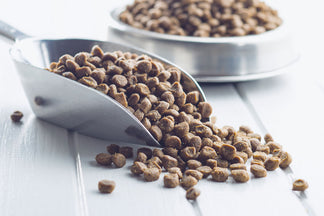Today we move to the letter “E” in our ingredient A to Z series and are featuring Enterococcus Faecium as our ingredient of the day. Admittedly, this is a tough ingredient to understand and there is some conflicting, and somewhat scary information on it!
What is Enterococcus Faecium?
Enterococcus Faecium is a stomach bacterium that is used as a probiotic in some pet foods. This bacterium is normally found in the digestive systems of many animals including dogs, cats and humans. Probiotics are generally defined as a living organism, often bacteria, which are used to promote digestive and overall health.
Common names for Enterococcus Faecium
There really aren’t many common names for but it can sometimes be called Enterococcus Faecium fermentation product, or spelled differently (e.g. Enterocococcus Faecieum). It was formerly called “Streptococcus Faecium” before it was renamed in 1984 due to a change in classification.
Why is Enterococcus Faecium included in pet food?
Enterococcus Faecium and probiotics in general are added to pet food as a digestive aid and to increase the number of healthy bacteria in the stomach which may provide health benefits.
Common benefits or risks of Enterococcus Faecium
Benefits: Enterococcus Faecium (and probiotics generally) are purported to provide several benefits to a pet including aiding digestion and helping to maintain a healthy mix of bacteria in the stomach (which can be helpful when switching diets or after anti-biotic treatment). Probiotics are often used to treat pets with inflammatory digestive diseases, to counteract stress related stomach disorders, and to treat diarrhea.
Risks: Enterococcus Faecium is one ‘bad ass’ bacterium. It can live in a multitude of environments and temperatures and is among the leading causes of hospital-acquired infections in the United States and Europe (partly due to its ability to build resistance to anti-biotic drug treatments).
Miscellaneous facts about Enterococcus Faecium
- The research on the efficacy of Enterococcus Faecium as a pet food supplemental ingredient is somewhat mixed. Some studies suggest that it is not appropriate as a probiotic at all.
Sources and further reading
http://www.dog-nutrition-advice.com/probiotic-dog-foods.html
http://www.ncbi.nlm.nih.gov/pubmed/12672936
http://www.biomedcentral.com/1471-2180/12/135
http://www.purinavets.eu/uk/no-messing/PDFs/related_articles/PVD_2.13.8_FF_KOL_Newsletter.pdf



 Food
Food
 Food
Food
 Food
Food
